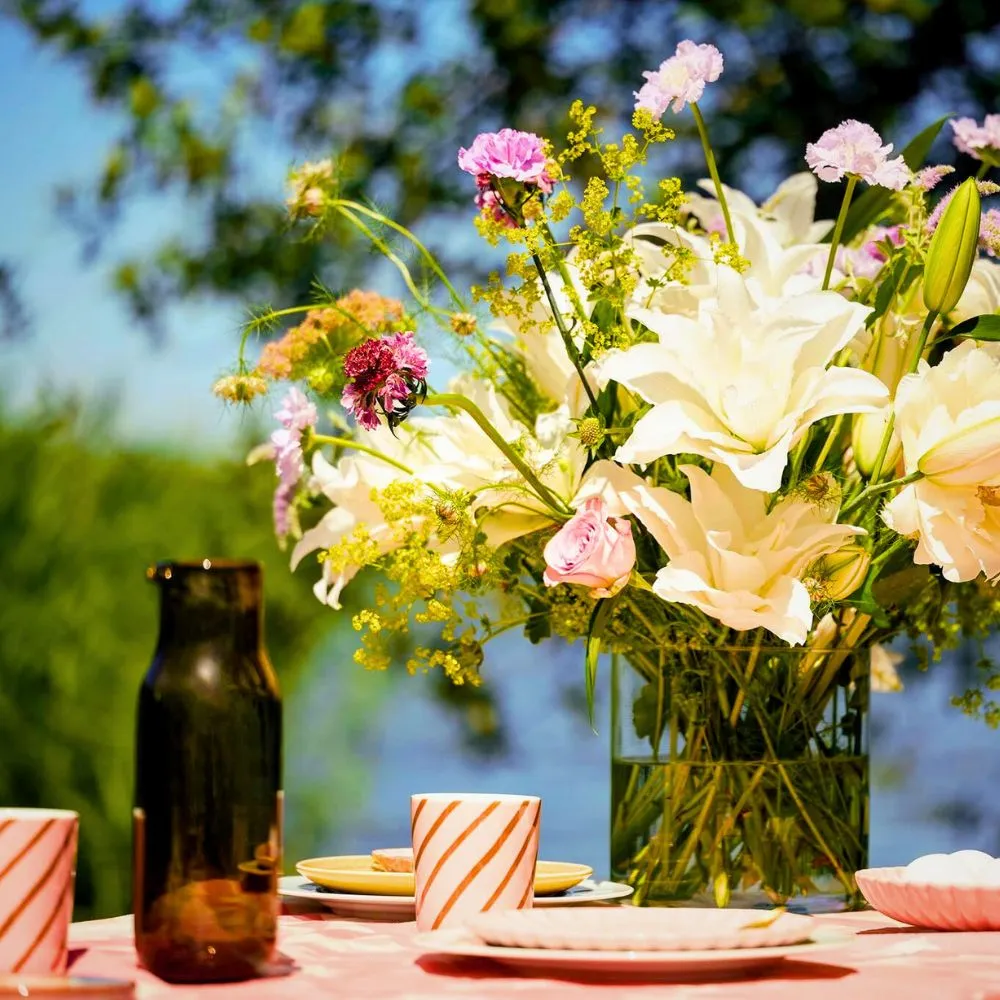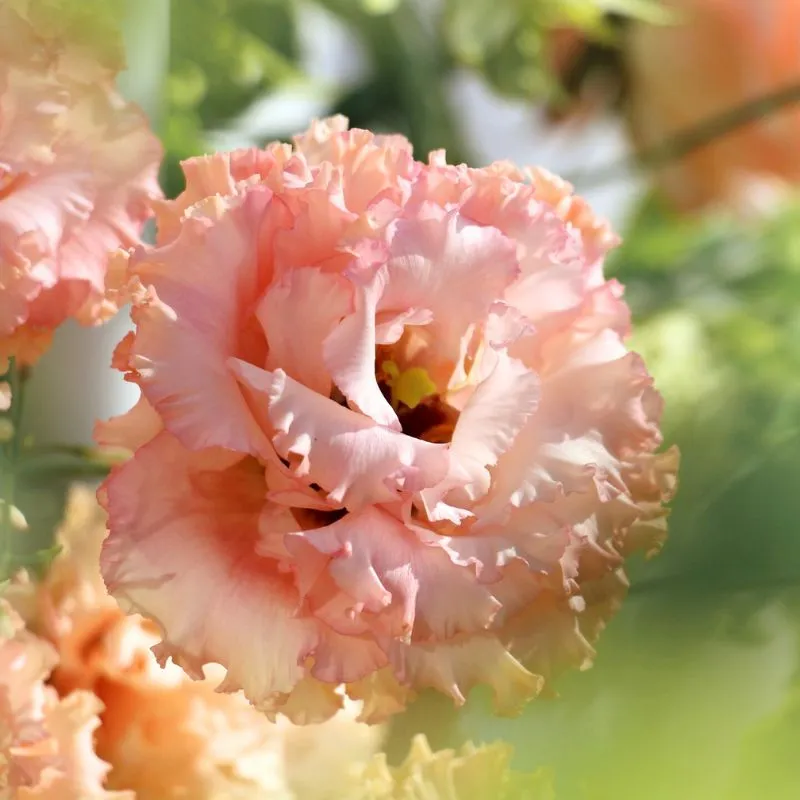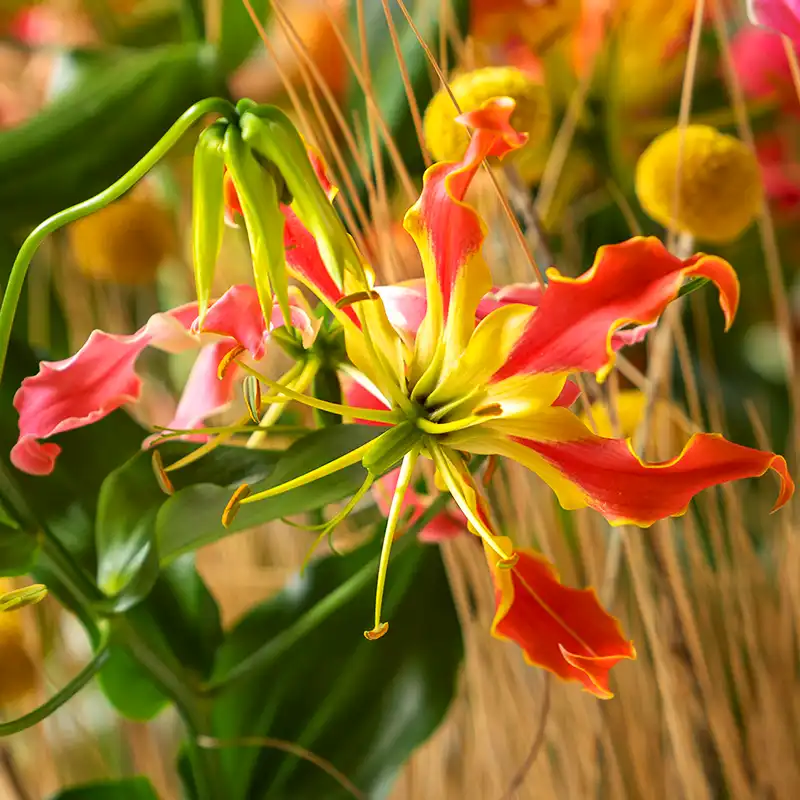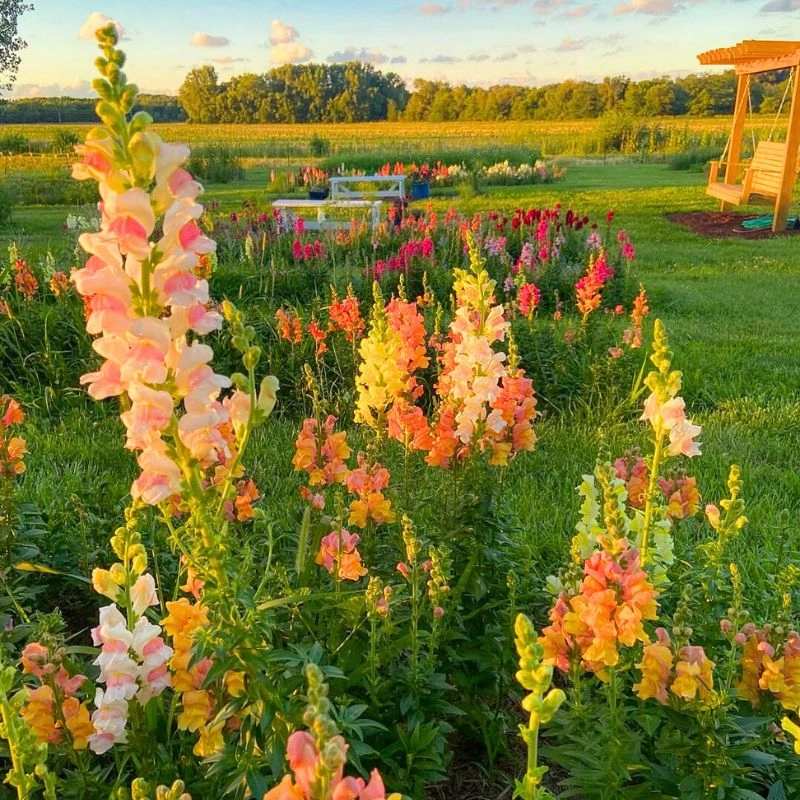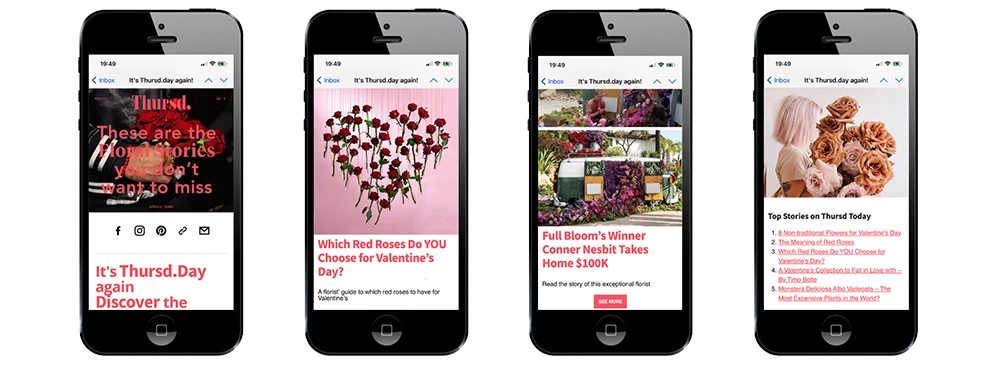Flowers have different roles in different settings, including symbolism in rituals, designs, decor, and different special events. And, lilies are some of the most unique flowers for these purposes. Whether speckled or brushed with delicate gradients, lily flowers are indeed enigmatic. They have petals that come in different shapes, from trumpets to funnels, cups, bells, bowls, and even flat forms. Furthermore, they come in diverse varieties; some with silken petals, some with an intoxicating fragrance that perfumes floral designs, interiors, and even gardens. Each variety—whether the bold Asiatic lily, the fragrant Oriental lilies, the large out-facing Trumpet lilies, or the long-flowered Longiflorums—carries a charm uniquely distinct to itself; with curves and contours that conjure a sense of both fragility and strength.
But do you know generally what lily flowers mean? Did you know that from ancient legends to different modern forms of personal expression, the lily flower's meaning resonates with different people and cultures in varied ways? Simply put, all across the world, these flowers have different roles in different settings; from symbolism and meanings in rituals to floral designs, decor, and many more special events. You'll definitely find them fascinating.
The Origin and Spread of the Lily Flower
The lily flower, belonging to the genus Lilium, has a long and storied history. While its account dates back thousands of years, its existence dates back even longer. Found in the Liliaceae family, the lily flower is native to temperate regions of the Northern Hemisphere, including Europe, Asia, and North America. Some fossil records suggest lilies have existed for at least 58 million years, but their widespread cultivation began roughly 3,000 years ago. Some evidence, however, suggests that they were grown as early as the second millennium BCE in Asia Minor for both ornamental and medicinal purposes.

Ancient civilizations revered lilies. The Minoans in Crete, for instance, associated them with motherhood, while Egyptians used them in funeral garlands to symbolize resurrection. Even more historically, lilies have been associated with various other mythologies and religions. In ancient Greece, the lily was linked to the goddess Hera, symbolizing purity and motherhood. Just so you know, the word ‘lily’ is derived from the Greek word leírion, which makes reference to the flower's delicate beauty.
The lily flower's association with purity continued into Christianity, where it became a symbol of the Virgin Mary. The Madonna lily (Lilium candidum), revered for its beauty and fragrance, became particularly associated with Christian symbolism, representing purity and the Virgin Mary. It epitomized her innocence and virtue. This religious significance contributed to the spread of lilies across Europe and their incorporation into various cultural practices.
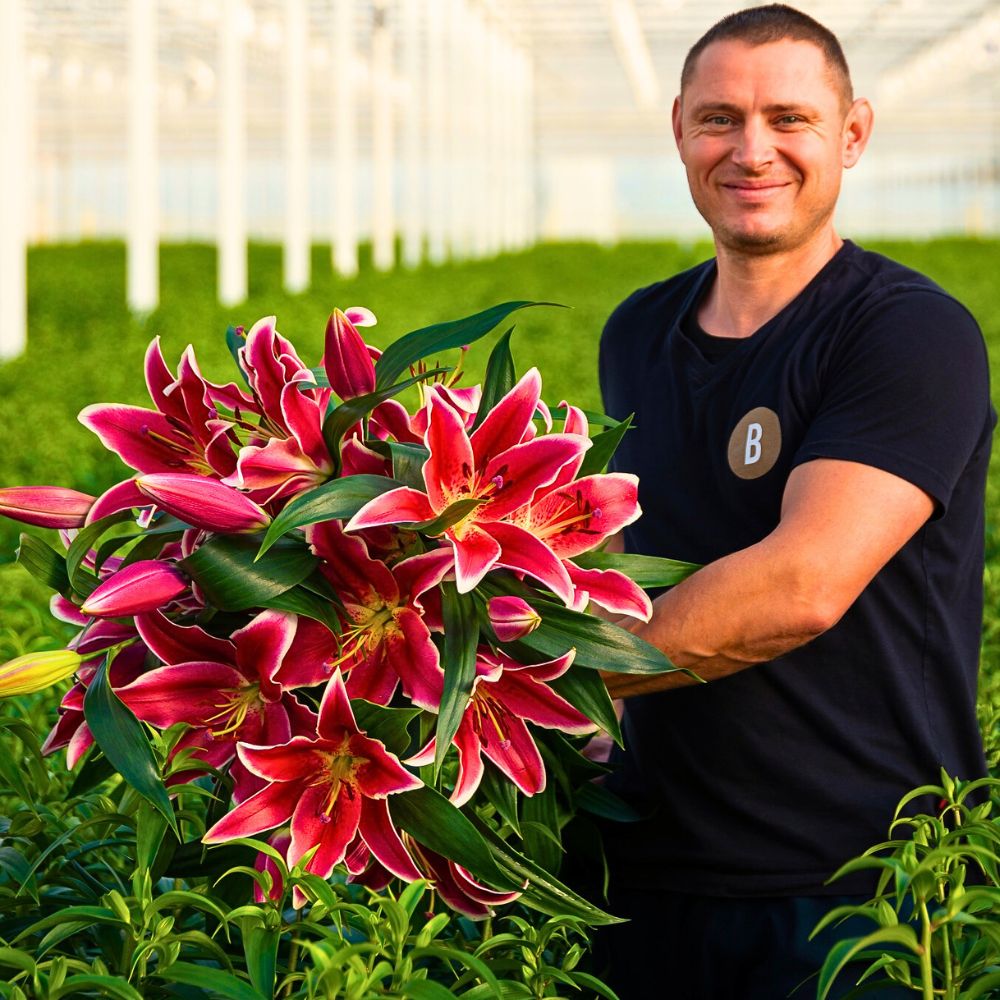
The spread of lilies across the globe can be traced through historical trade routes. They were introduced to Europe from Asia through ancient trade networks, and by the Middle Ages, they had become a staple in European gardens. Over time, these flowers have been cultivated and hybridized, leading to the diverse varieties that are available today.
For instance, there are hybrids like the Orienpet, also called OT (Oriental × Trumpet) that combine resilience and fragrance, and Longi Oriental, known as LO, which combines Longiflorum and Oriental lilies, while still lilies in perfumery (like Lilium candidum essence) add floral notes to luxury scents.
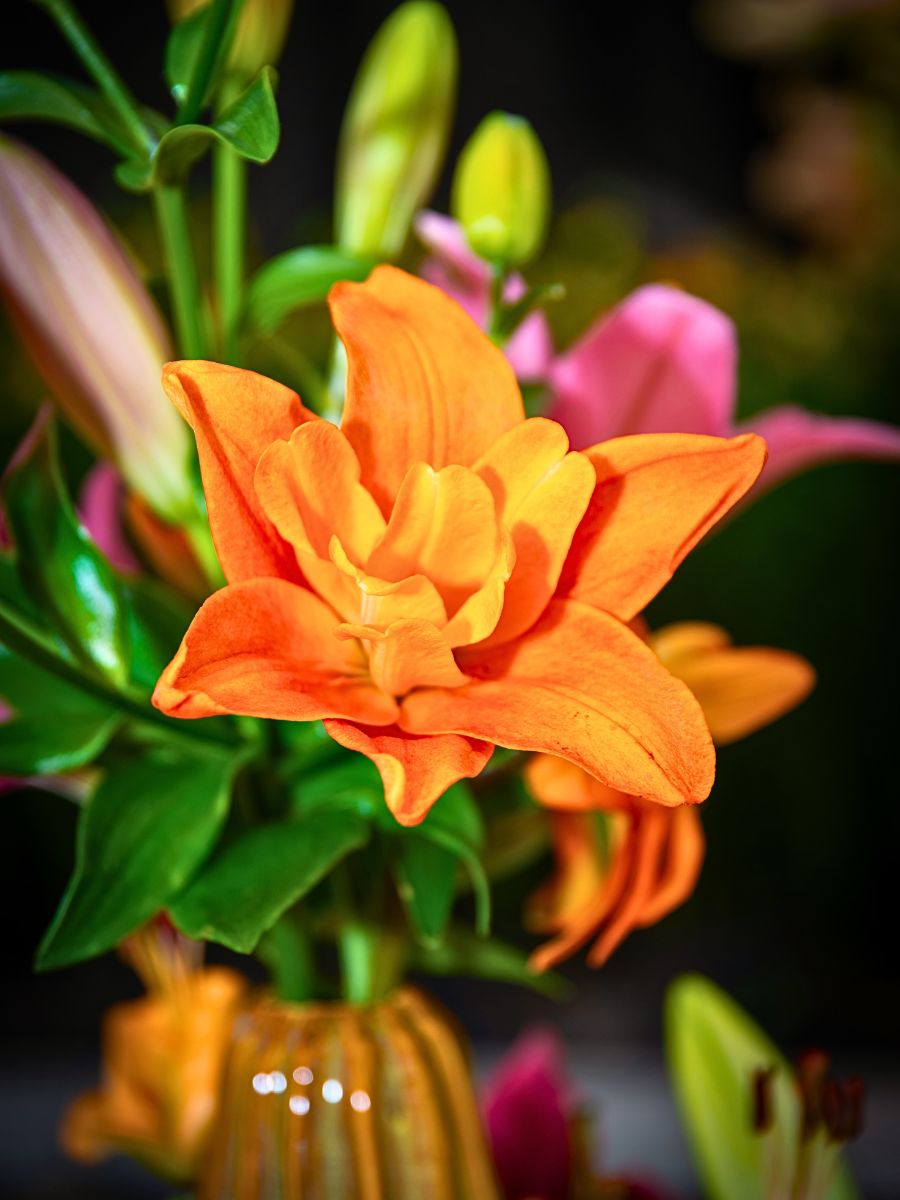
The lily family encompasses over a hundred species, all of which have unique characteristics and meanings. There are, also, crossings or mutants creating more varieties. However, the most popular ones are the Asiatic lilies, Oriental lilies, Trumpet lilies, and Longiflorum lilies. Each type offers a different aesthetic and symbolism; thus they are suitable for different occasions.
Asiatic Lilies
Asiatic lilies, for example, are known for their lively colors and lack of fragrance. They are, even so, ideal for bouquets and arrangements. They symbolize passion and enthusiasm and can be used in celebrations and joyful events. These lilies, known for their hardiness as well, bloom early in the summer and are often used in gardens.
Oriental Lilies
Oriental lilies, on the other hand, are renowned for their large blooms and strong sweet fragrance. They signify purity and refined beauty. You’d ideally find them in wedding designs and arrangements, and formal occasions.
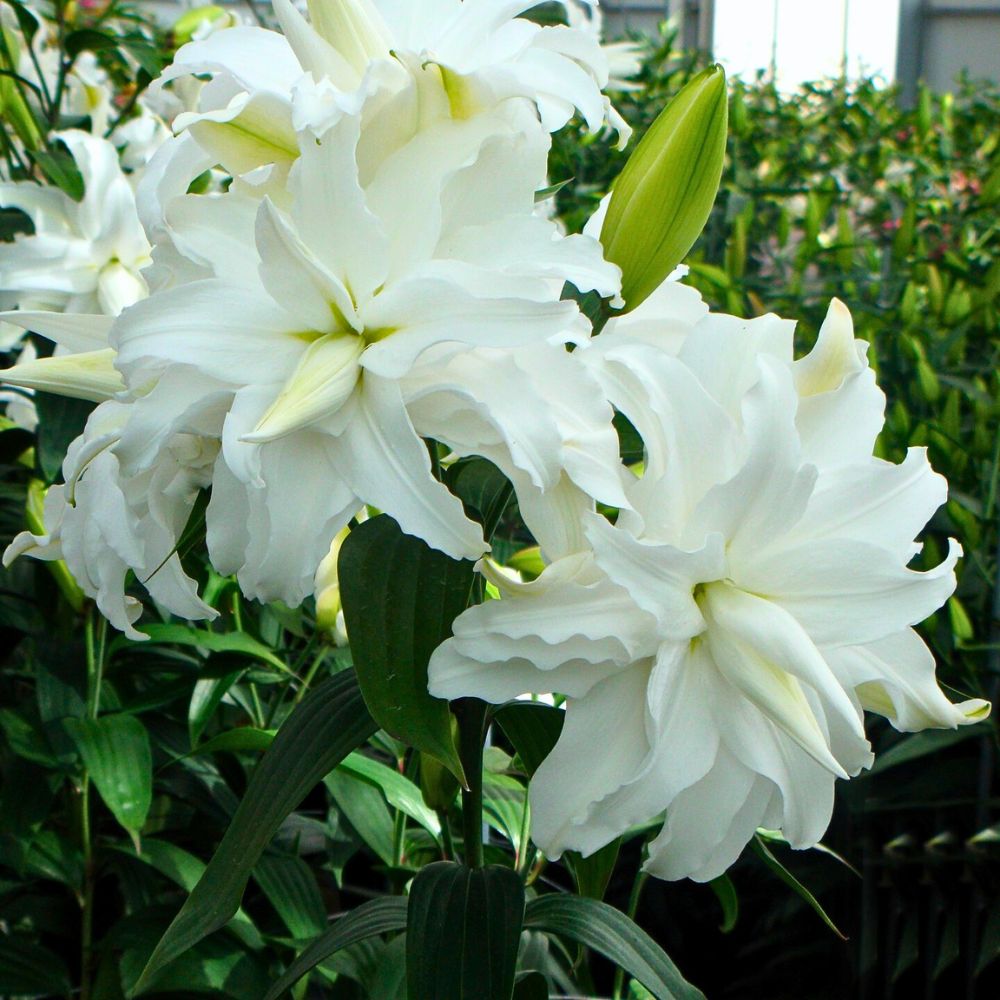
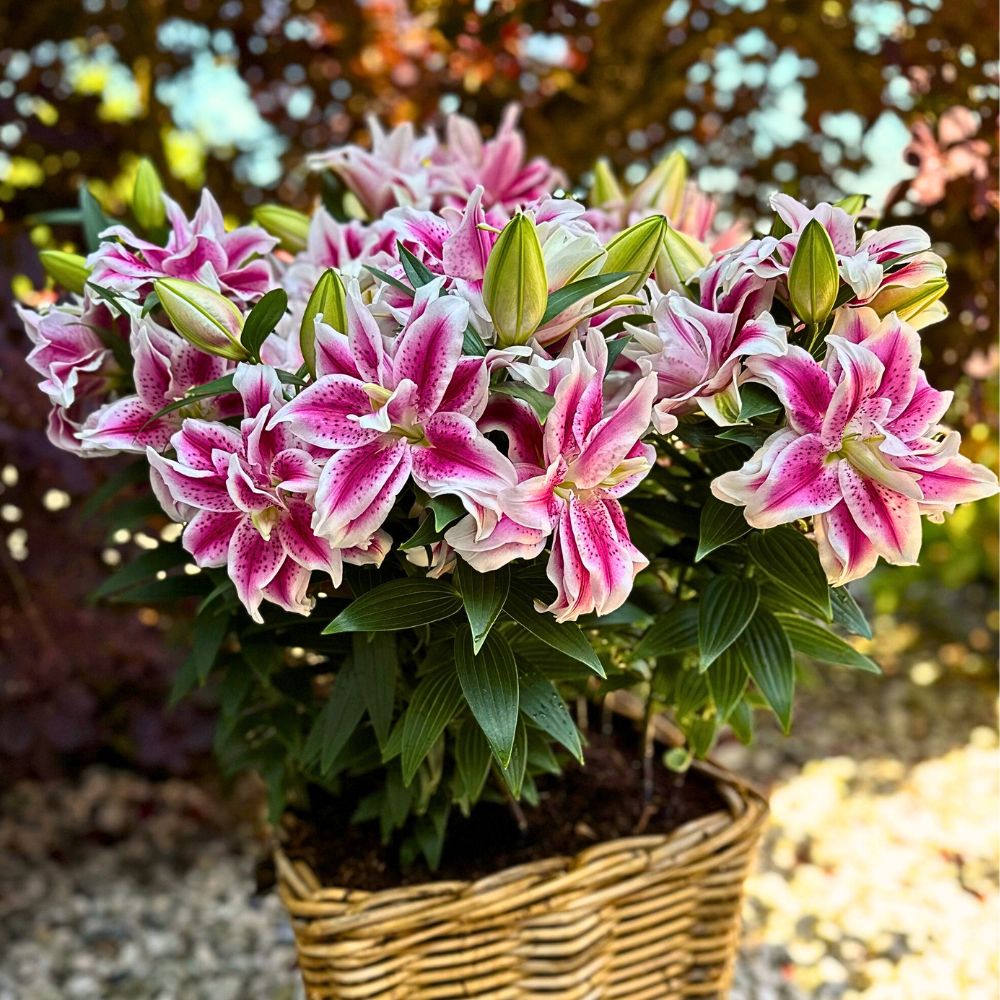
Roselilies
Roselily, for instance, specifically refers to a series of double-flowering Oriental lilies. Developed through hybridization and selective breeding, the Roselily mainly combines traits from Oriental and Trumpet lilies while featuring unique characteristics. These lilies are known for their large, fragrant, and pollen-free flowers. the flowers are, slos, without pistils. They are popular in gardens and floral arrangements. The Roselily series includes various cultivars such as Roselily Tatsjana and Roselily Samantha, characterized by their robust growth and attractive blooms.
Trumpet Lilies
Trumpet or Aurelian lilies are, for their part, easily recognized by their distinctive trumpet-shaped flowers with an intoxicating fragrance. They can reach impressive heights of up to five feet. The flowers are typically large and come in various colors, including white, yellow, and pink. Their tall, upright stems and waxy petals often create a striking visual presence in gardens and floral arrangements.
Longiflorums
There are, also, Easter lilies (Longiflorums), which feature white trumpet-shaped flowers that symbolize purity and resurrection. They are quintessentially associated with Easter celebrations due to their pure white, trumpet-shaped flowers that bloom in spring.
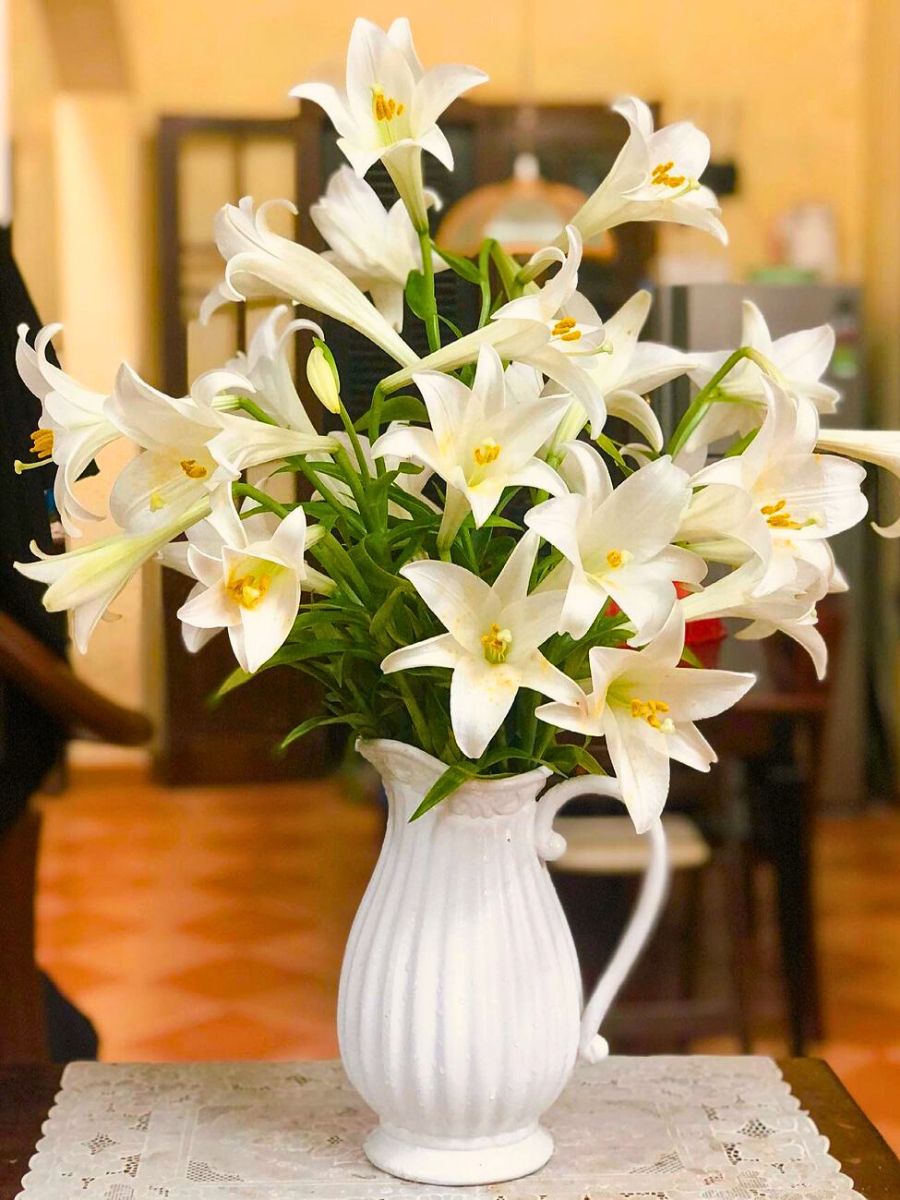
Symbolic Meaning of Lilies
The meaning of lily flowers varies significantly depending on their color and variety, and even the context. White lilies represent purity, virtue, and innocence, thus a common choice for weddings and funerals. Pink lilies symbolize admiration and compassion; they are often given as tokens of gratitude. Red lilies indicate passion and love and could be a romantic alternative to roses. Orange lilies, on the other hand, represent enthusiasm while yellow lilies symbolize gratitude and joy.
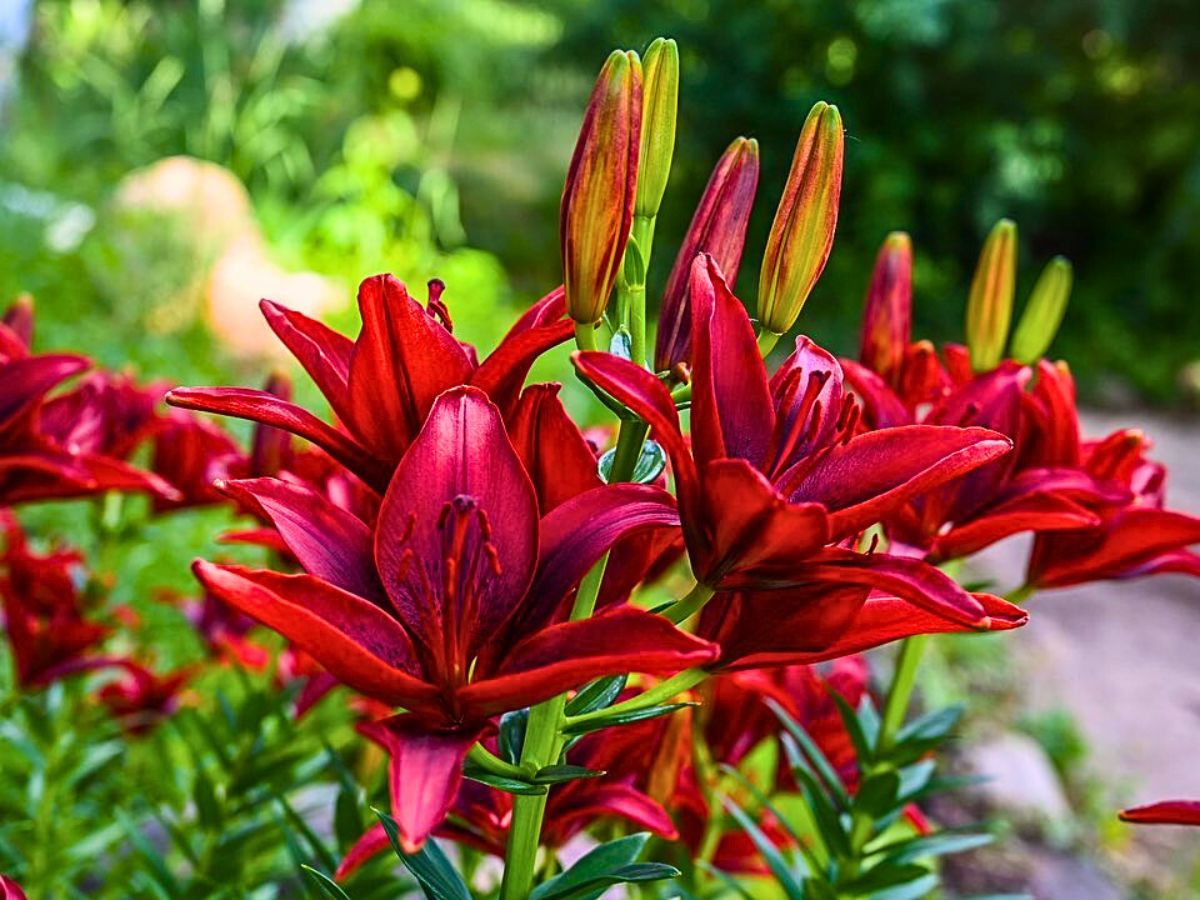
Cultural Significance Across Different Societies
Across different cultures, lily flowers hold even more significant meanings. In Greek mythology, they are said to have originated from Hera's milk, linking them to motherhood and rebirth. The Greeks viewed these flowers as symbols of fertility and femininity. In ancient Egypt, they were also prominent as symbols of fertility and rebirth. They were, likewise, often used in religious ceremonies and depicted in tomb paintings.
In Christian symbolism, particularly with the Madonna lilies, the lily flower means purity and chastity. These flowers are often depicted in art alongside the Virgin Mary. Also, during Easter, white lilies symbolize resurrection and new beginnings. And, though not commonly mentioned in Islamic texts, lilies symbolize peace and calmness; their white color reflects purity—a significant aspect of Islamic beliefs.

In Asian cultures, especially in China, where lilies (bǎi hé) sound like ‘100 years of love,’ they are associated with good fortune and prosperity. They are frequently used in celebrations and are believed to bring happiness and success to families. The symbolism of lilies in these cultures emphasizes their connection to positive outcomes and blessings, and they are commonly given as wedding gifts because they are believed to bring a hundred years of love.
In Japan, the word for ‘lily’, ユリ (yuri), sounds quite similar to the word for ‘eight’ (八, hachi), which is considered a lucky number because the kanji character for eight is linked to prosperity and good fortune as its shape broadens at the bottom, different types of lilies convey different meanings; white lilies symbolize purity while tiger lilies represent pride. In Hinduism, lilies are associated with Saraswati, the goddess of knowledge and arts; they are offered during festivals like Vasant Panchami to celebrate spring.
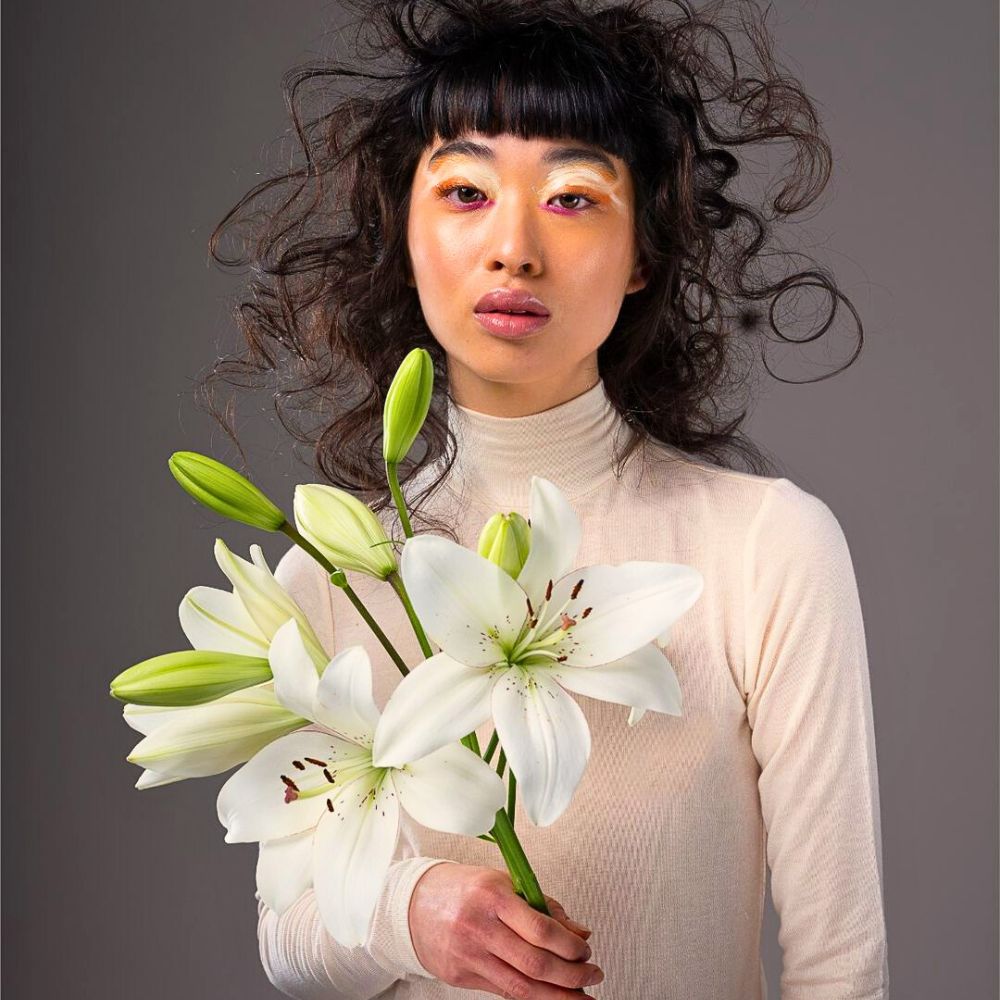
Moreover, during the Victorian Era, the practice of floriography, or the language of flowers, allowed individuals to convey complex emotions and sentiments through floral arrangements. And, still, lilies held significant meanings in this coded communication. Then, and even now, the white lily flower symbolizes purity and virtue. This flower conveyed sentiments of innocence and holiness, allowing individuals to express deep feelings without saying a word. The orange lily, however, carried a more nuanced meaning.
While it could suggest confidence and pride in some contexts, it also conveyed disdain or hatred in others. This dualism made the orange lily an influential flower in the Victorian floral lexicon; its presentation could dramatically alter the intended message. For instance, an orange lily given in a bouquet might signify respect when presented upright but could imply contempt if given upside down. Pink lilies were associated with prosperity and abundance, reflecting wealth and opulence. Their inclusion in floral arrangements communicated admiration and appreciation, thus they were suitable for both romantic gestures and expressions of friendship.
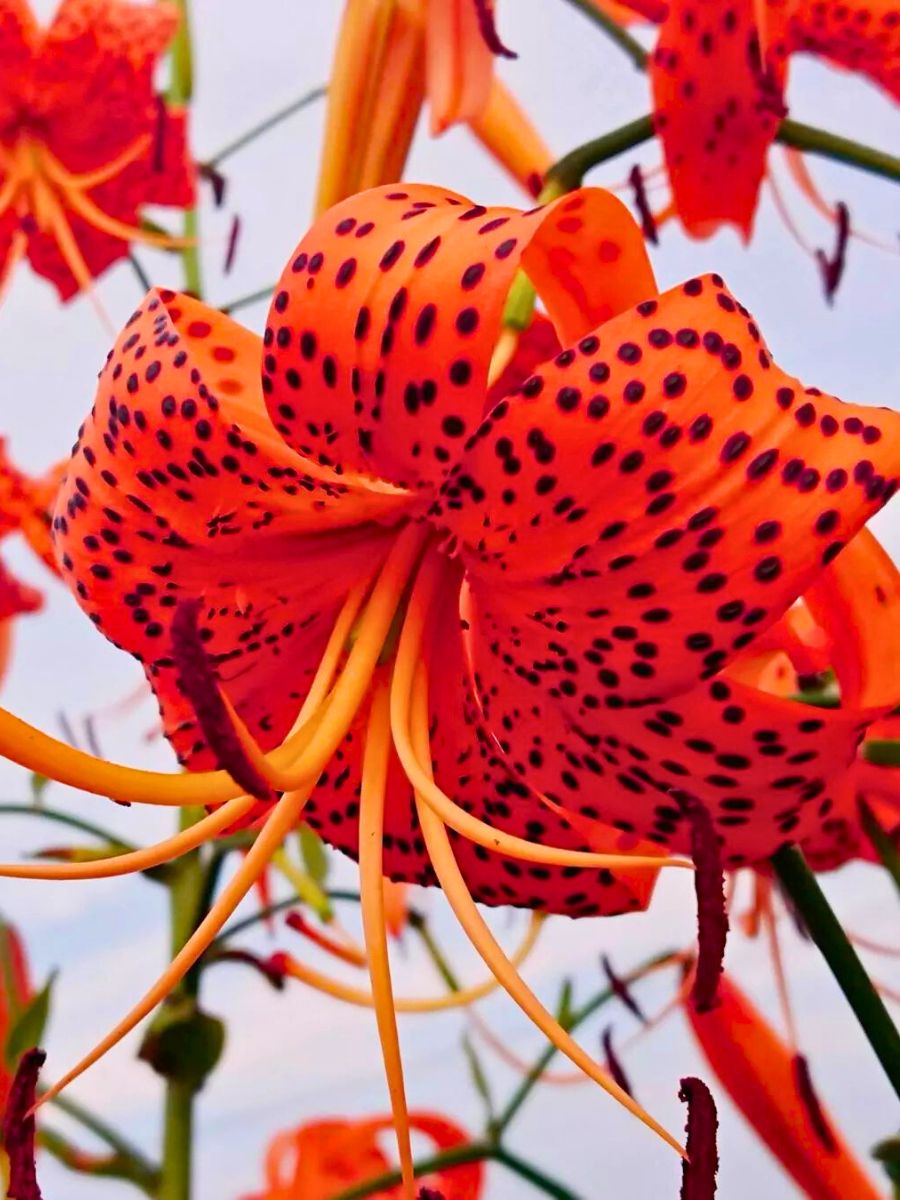
What Is the Meaning of Lily Flowers in More Modern Contexts?
In modern contexts, lily flowers remain dearly loved and are frequently used across different occasions. Their presence at weddings continues to symbolize purity, love, and new beginnings. In such events, white lilies are often preferred for their classic elegance and association with innocence.
But in contrast, the use of lilies in funeral arrangements reflects their association with the transition of life. They offer solace and hope in this case. The lasting popularity of lilies, therefore, emphasizes their ability to rise above cultural confines and resonate with diverse audiences, guaranteeing their continued presence in gardens, art, and personal expressions, such as with lily flower tattoos.


Lily Flower Tattoo Meaning
Quite a popular medium of expression, lily flower tattoos are, also, symbolically rich and have aesthetic appeal. A lily flower tattoo can mean anything from purity to renewal, and the beauty of life. Depending on the color and style of the tattoo, it can convey different inferences. For instance, a white lily tattoo may symbolize innocence, while a red lily tattoo could represent passionate love.
A lily flower tattoo meaning might, also, represent innocence (Madonna lily), or resilience (tiger lily). Some lily flower tattoo designs, even, highlight their beauty, with black ink emphasizing mystery. The flexibility of lily tattoos, therefore, allows different individuals to express their personal stories and emotions through this flower motif.
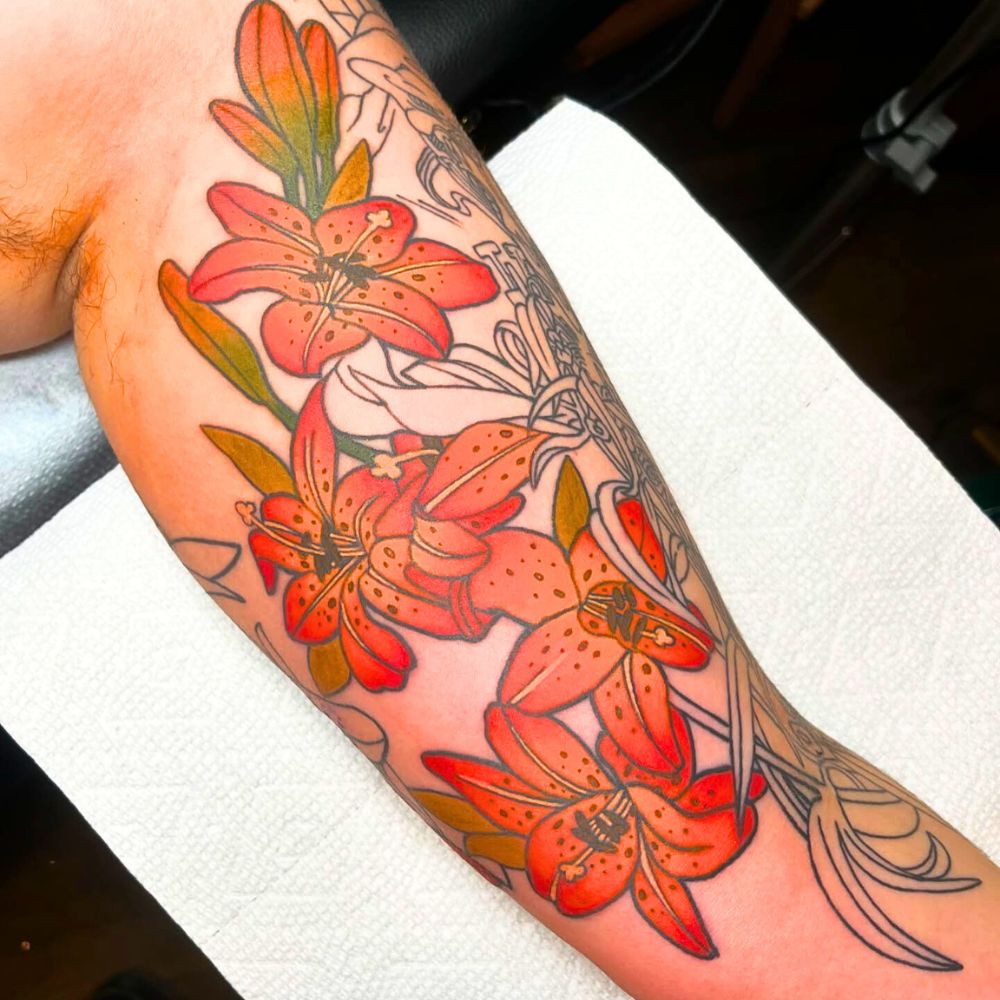
Lily Flower Symbolism in Art and Literature
Lilies have been a recurrent subject in art and literature throughout history. They have been a preferred theme in fine art and design for centuries, and their beauty and quality have inspired many artists who seek to symbolize themes like love, purity, death, rebirth, and spirituality. This flower’s graceful form and exciting colors have motivated artists; appearing in paintings, sculptures, and decorative arts. From the delicate brushstrokes of Impressionism to the bold lines of Art Nouveau, you’ll likely come across lily flowers immortalized in famous works including paintings by artists like Sandro Botticelli and Vincent Van Gogh. In literature, poets often use lilies as symbols of ephemerality and beauty that fade over time.
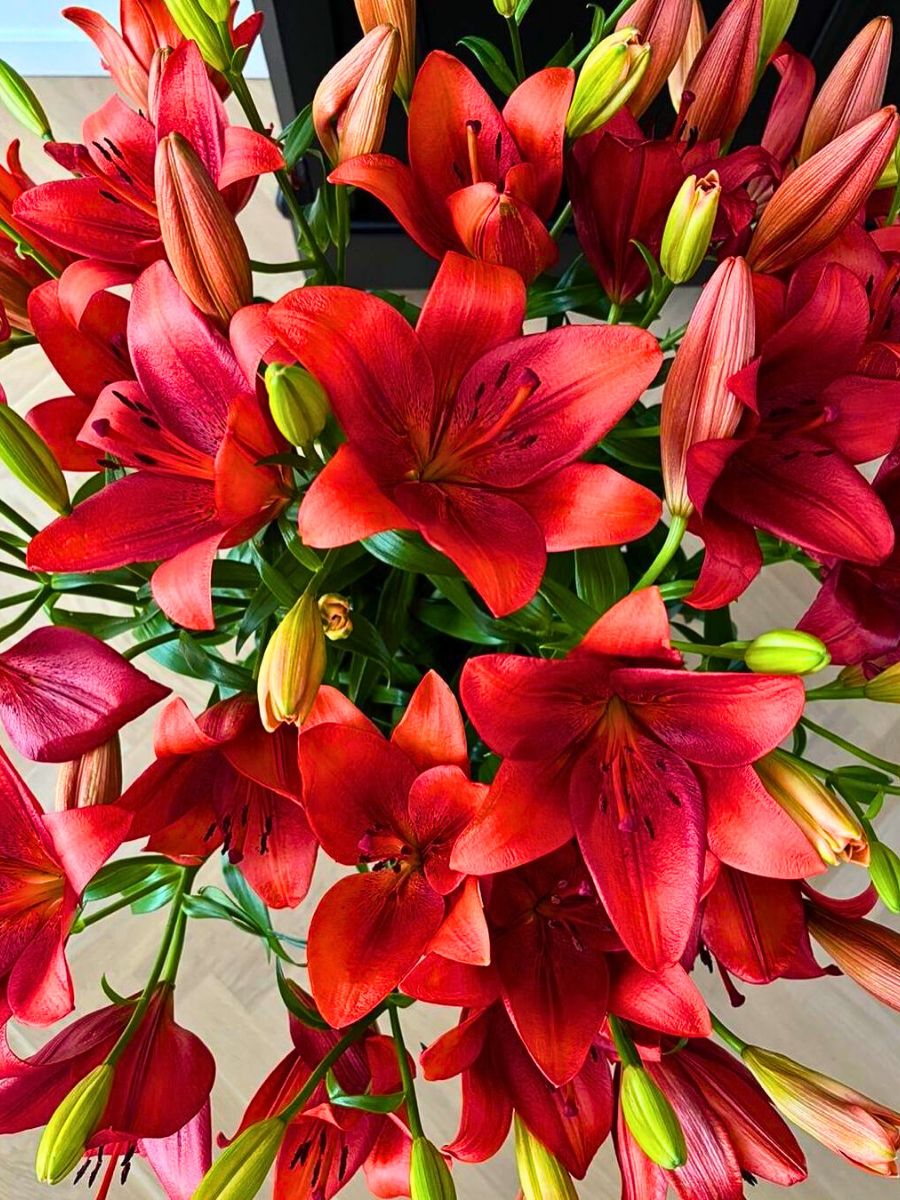
The Use of Lily Flowers in Varied Designs and Occasions
By now, we all know that lily flowers possess remarkable beauty and resourcefulness. This explains why they can be seamlessly incorporated into a wide range of designs and occasions where their presence and representation make them a much-loved choice. From unique floral arrangements to wedding designs, and floral compositions for special events, these elegant flowers remain a favorite.
In weddings, lilies are often featured in bouquets, centerpieces, and decorations. Their depiction of purity and love makes them a suitable pick for such a significant celebration. White lilies, in particular, are favored for their elegance and lasting beauty.
But then again, lilies are also commonly used in funeral arrangements, signifying the purity of the departed soul and the hope of rebirth. White-colored lilies, in particular, are often chosen for this occasion due to their association with innocence and the transition to life hereafter. This quality allows the flowers to fit flawlessly into different contexts, from joyous celebrations to solemn remembrances.
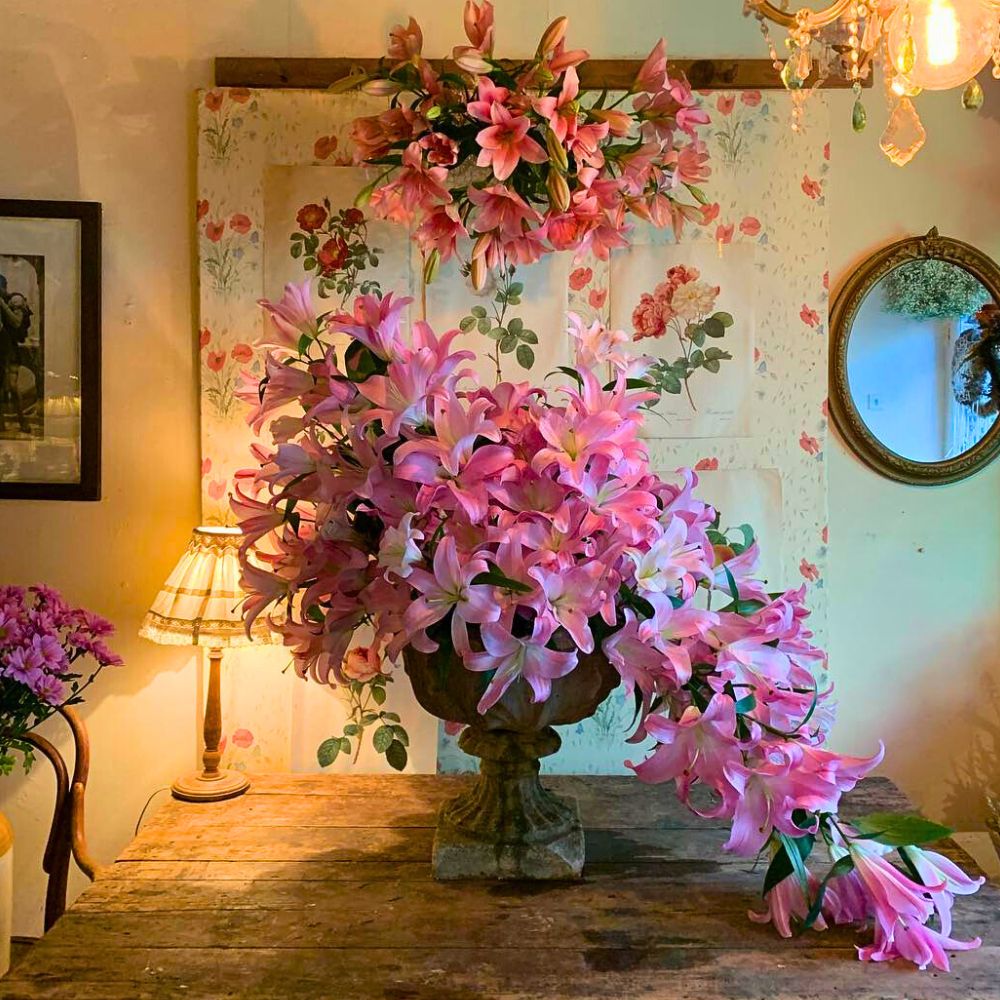
Still, yet, in wedding florals, lilies are a perfect choice for bridal bouquets and venue decorations. Their symbolism of new beginnings often sees wedding designers and florists incorporate them into centerpieces, aisle decor, and floral arrangements that not only enhance the overall ambiance of the celebration but also communicate the message intended. The fragrant flowers, in this case, more than beautify the setting, as they also create a romantic air that guests would love.
And, in home décor, the diverse colors and elegant shapes of these flowers can transform the spaces, whether displayed in vases, bouquets, or used in floral wall art, where lily motifs are popular in textiles and wallpaper since they allow people to enjoy their beauty year-round without the need for care.
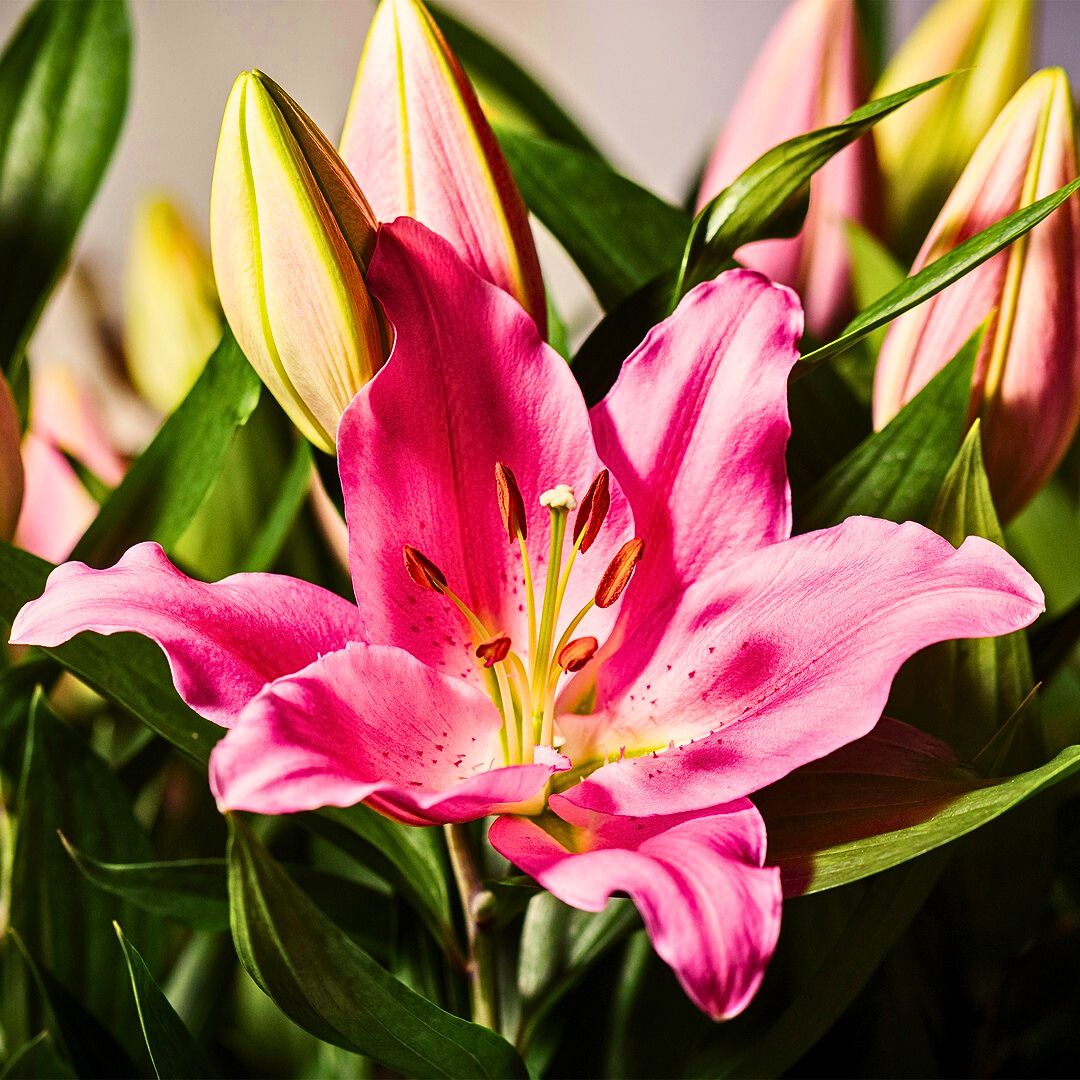
What is even more, in corporate settings, the refined charm of lilies adds enhancement to office spaces, events, and gatherings, with their presence elevating the decor of conferences or business meetings. This creates a warm and welcoming atmosphere. Essentially, one would therefore say that the all-roundedness of lily flowers makes them suitable for practically any occasion one has in mind.
Featured image by @dutchlilymasters, header image by @dutchlilymasters.

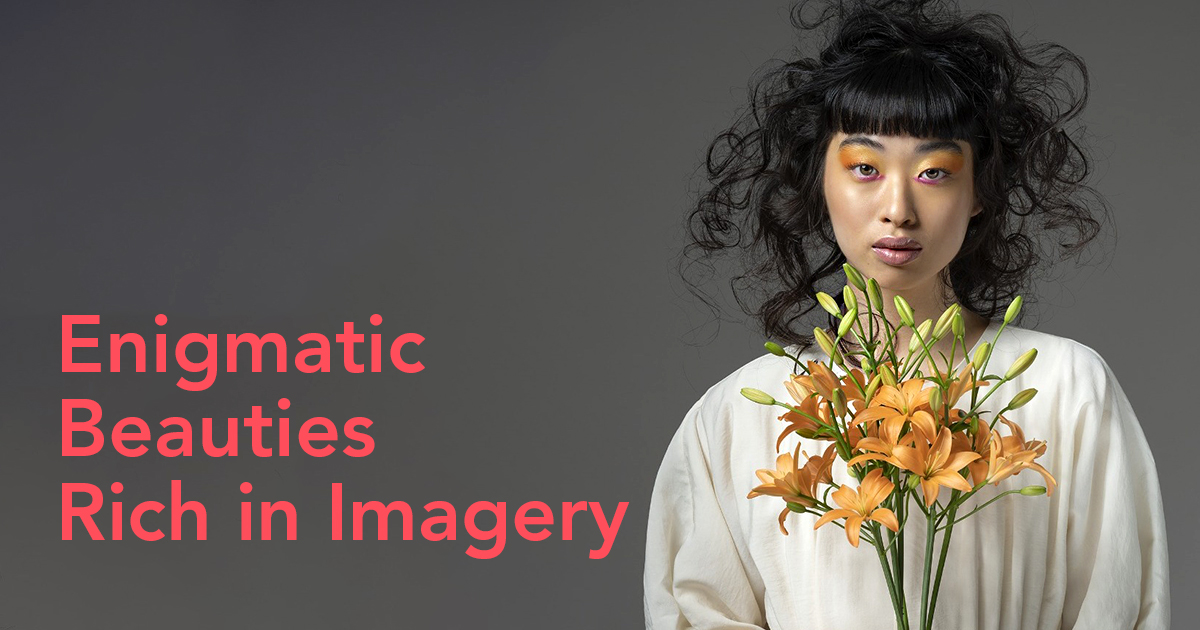
.webp)
